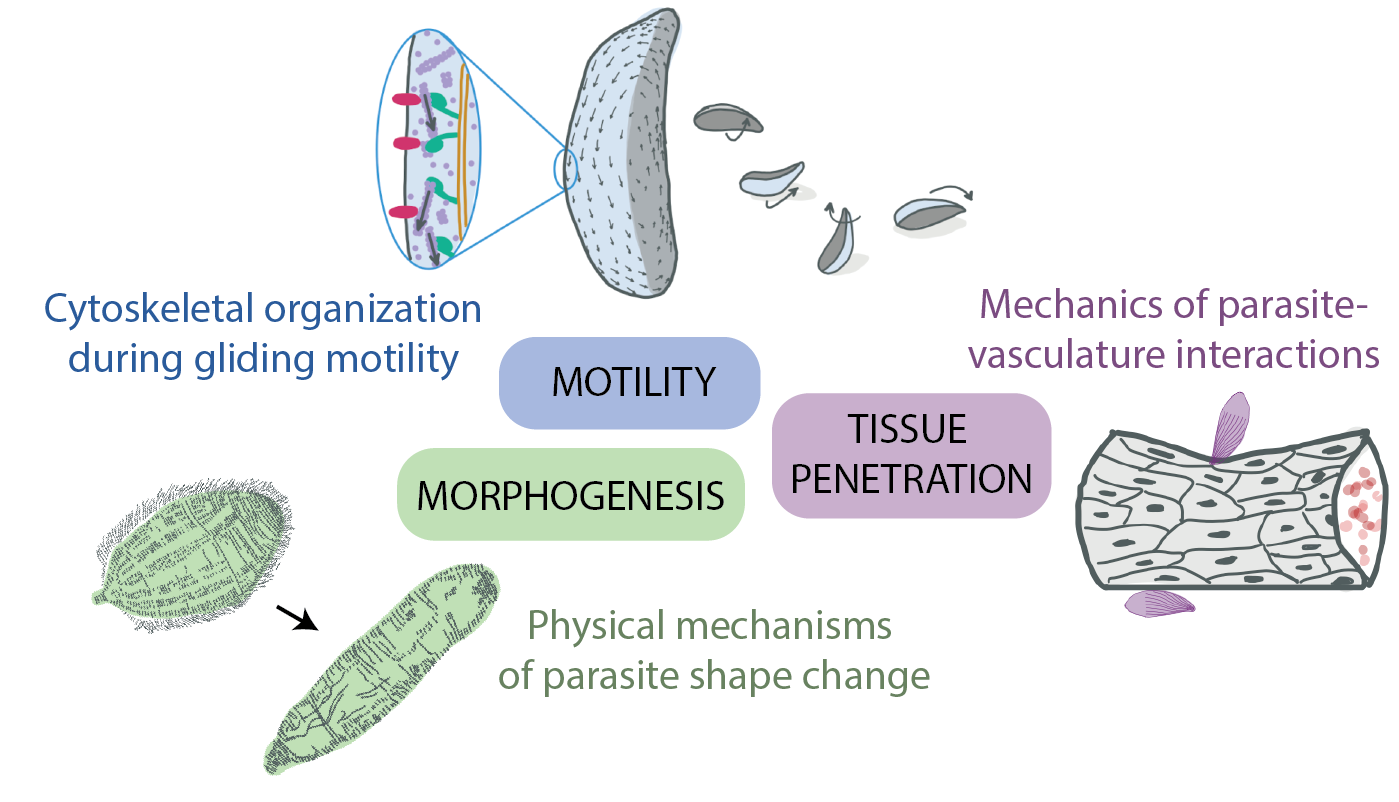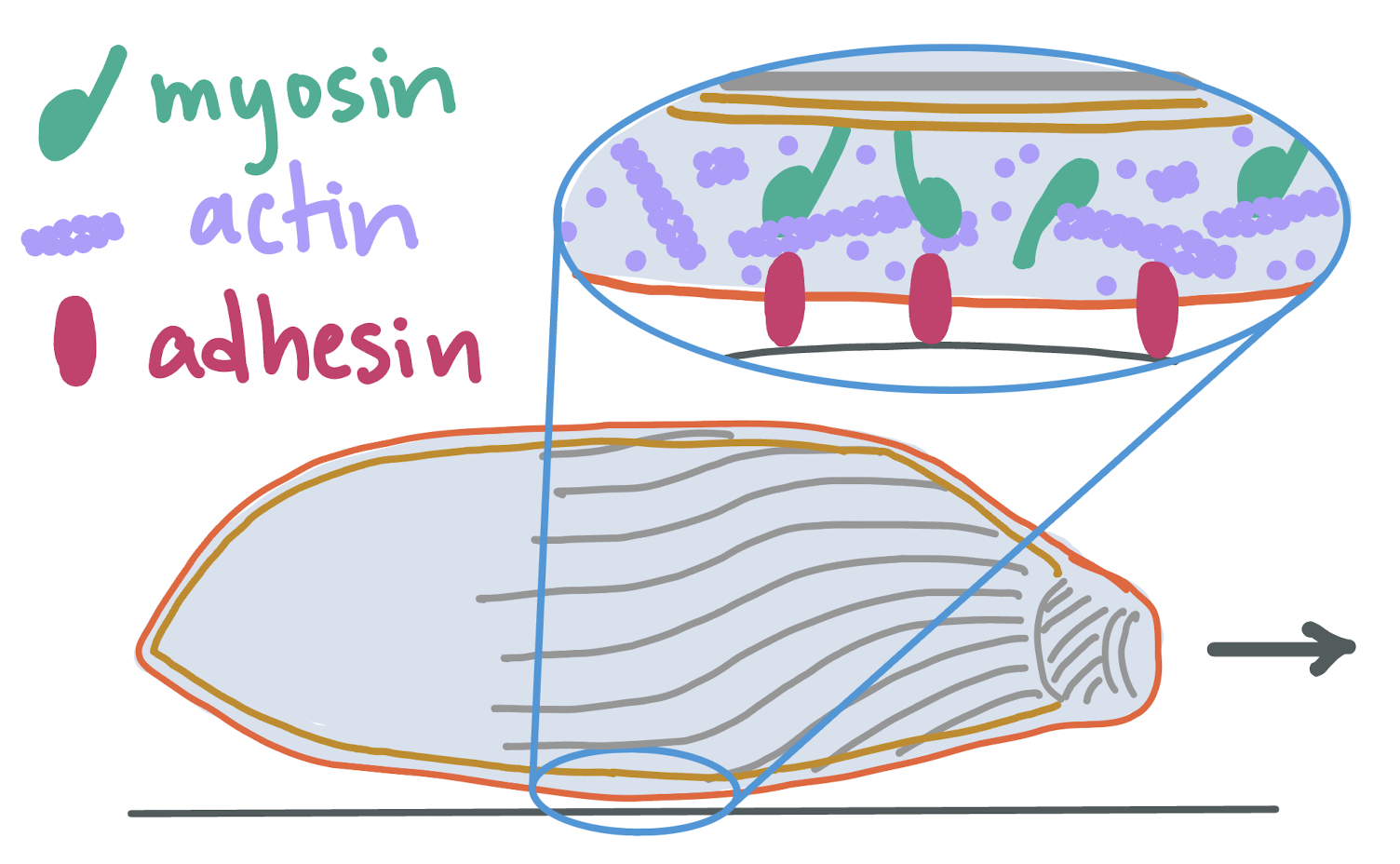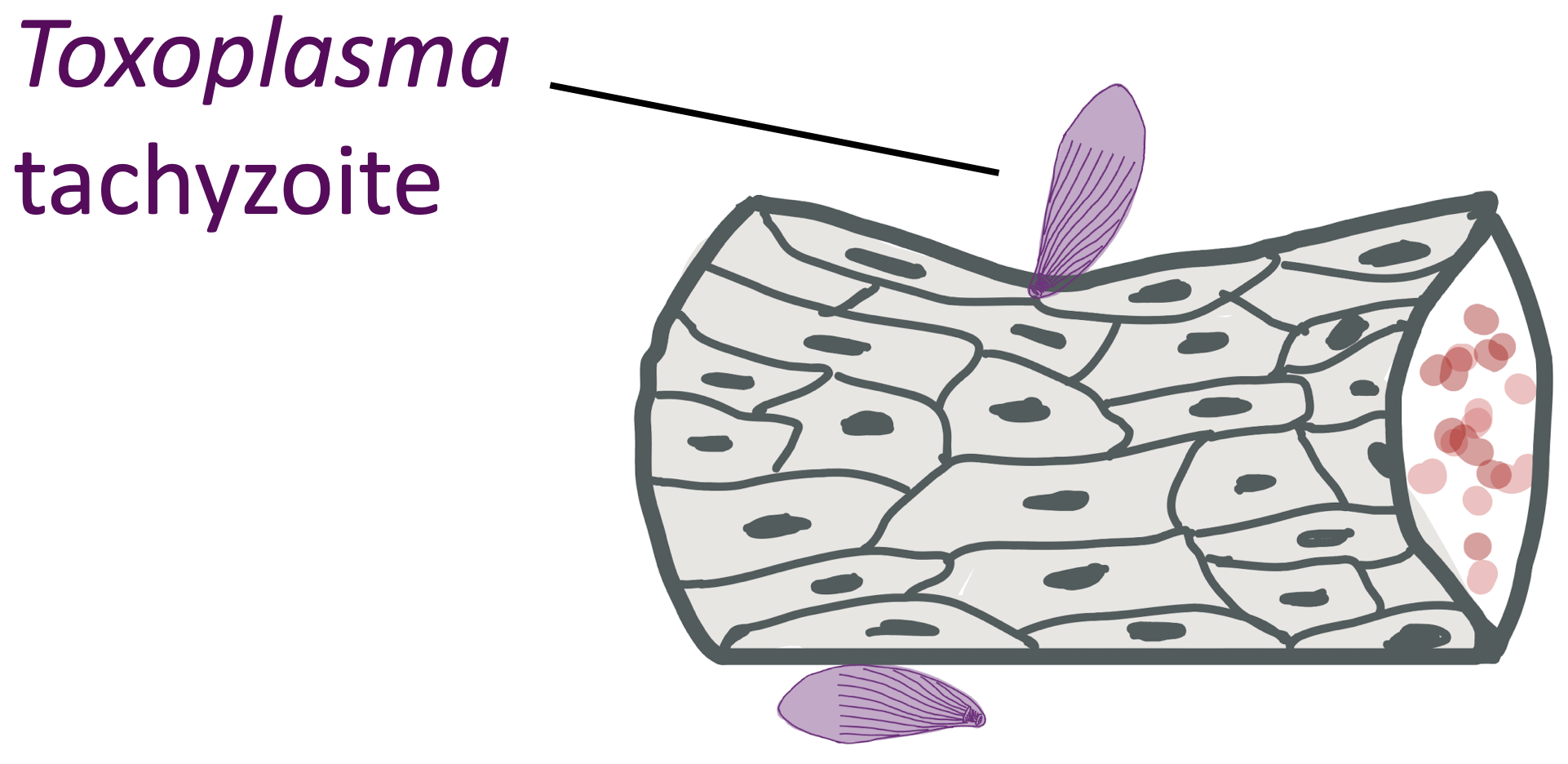The goal of the Hueschen Lab is to help understand the physical biology of parasites. We study how parasitic cells and animals move, penetrate through tissue, and change shape. We use microscopy, experimental approaches from cell and parasite biology, and physical and mathematical thinking. Current topics of interest include the dynamics and patterning of cytoskeletal proteins inside parasitic cells like Toxoplasma and Plasmodium (malaria parasite), mechanisms of cell gliding motility, the mechanics of blood vessel penetration by parasites, and the mechanics of morphogenesis (shape change) in parasitic worms.

The living world is weird and wonderful. The millions of species living on Earth showcase a mind-boggling diversity of cells and organisms, and much of this richness remains unexplored by science. Consider, for example, the incredible morphogenesis and mechanics of parasitic organisms. Schistosoma’s shape-shifting life cycle includes morphing between 200 µm cilia-covered swimmers and cm-long worms, while gliding unicellular Toxoplasma or Plasmodium rocket over host cells thirty times faster than the lumbering human immune cells that chase them. What biophysical principles underlie these striking mechanical processes? How do these parasites couple familiar eukaryotic modules for force-generation (actin and myosin, muscle fibers) to their unique geometric forms to morph between life stages, or to move within and between hosts?

How do cells glide?
The Apicomplexa are a group of unicellular parasitic protists that includes Toxoplasma gondii, which lives quietly in the brains of a third of the human population, and Plasmodium falciparum, a massive human health burden responsible for over 200 million cases of malaria each year. To disseminate through hosts, motile Apicomplexa glide over surfaces at speeds of microns per second while holding a rigid shape, defying the paradigmatic classification of motile eukaryotic cells into cilia-beating swimmers and shape-changing crawlers. Gliding is powered by a thin layer of actin filaments and myosin motors that lies just beneath the parasite plasma membrane. How are actin and myosin organized to generate directional force and actually propel a gliding cell?

What are the mechanics of tissue infection?
Parasites force their way through the tissues and organs of more than a billion human bodies every year, often using the bloodstream to reach a preferred location for reproduction or immune evasion. How do they accomplish this physical feat? We are interested in the mechanics of tissue infection by unicellular Toxoplasma gondii (~5 µm) and by larval stages of the parasitic flatworm Schistosoma mansoni (~100 µm), whose infection of a human host includes the physical challenge of squeezing through our narrow lung capillaries.



What mechanical processes drive parasite morphogenesis?
Over their complex life cycles, parasitic organisms adapt to dramatic changes in environment. Larval stages of the flatworm Schistosoma mansoni, for example, might be freely swimming in a cold lake one minute, then trying to burrow in the hot and hostile skin of a host the next. Over these transitions, Schistosoma mansoni undergoes striking changes in shape and size. What is the physical basis of these morphogenetic transformations?


